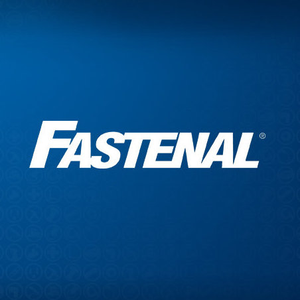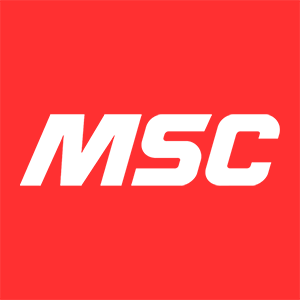
WESCO (WCC)
WESCO doesn’t excite us. Its growth has decelerated and its failure to generate meaningful free cash flow makes us question its prospects.― StockStory Analyst Team
1. News
2. Summary
Why We Think WESCO Will Underperform
Based in Pittsburgh, WESCO (NYSE:WCC) provides electrical, industrial, and communications products and augments them with services such as supply chain management.
- Low free cash flow margin gives it little breathing room, constraining its ability to self-fund growth or return capital to shareholders
- Organic revenue growth fell short of our benchmarks over the past two years and implies it may need to improve its products, pricing, or go-to-market strategy
- A bright spot is that its impressive 17.4% annual revenue growth over the last five years indicates it’s winning market share this cycle


WESCO doesn’t measure up to our expectations. Better stocks can be found in the market.
Why There Are Better Opportunities Than WESCO
High Quality
Investable
Underperform
Why There Are Better Opportunities Than WESCO
At $253.19 per share, WESCO trades at 16.2x forward P/E. This multiple is lower than most industrials companies, but for good reason.
Cheap stocks can look like great bargains at first glance, but you often get what you pay for. These mediocre businesses often have less earnings power, meaning there is more reliance on a re-rating to generate good returns - an unlikely scenario for low-quality companies.
3. WESCO (WCC) Research Report: Q3 CY2025 Update
Electrical supply company WESCO (NYSE:WCC) reported Q3 CY2025 results exceeding the market’s revenue expectations, with sales up 12.9% year on year to $6.20 billion. Its non-GAAP profit of $3.92 per share was 2.3% above analysts’ consensus estimates.
WESCO (WCC) Q3 CY2025 Highlights:
- Revenue: $6.20 billion vs analyst estimates of $5.91 billion (12.9% year-on-year growth, 4.9% beat)
- Adjusted EPS: $3.92 vs analyst estimates of $3.83 (2.3% beat)
- Adjusted EBITDA: $423 million vs analyst estimates of $412.8 million (6.8% margin, 2.5% beat)
- Operating Margin: 5.6%, in line with the same quarter last year
- Free Cash Flow was -$95.9 million, down from $279.5 million in the same quarter last year
- Organic Revenue rose 12.1% year on year vs analyst estimates of 7.1% growth (504.3 basis point beat)
- Market Capitalization: $11.11 billion
Company Overview
Based in Pittsburgh, WESCO (NYSE:WCC) provides electrical, industrial, and communications products and augments them with services such as supply chain management.
Founded in 1922, WESCO started as a subsidiary of Westinghouse Electric Corporation, a manufacturer of motors, generators, and turbines. It was charged with selling and distributing the equipment and components manufactured by its parent.
Today, WESCO still maintains the mission of selling and distributing. Among its electrical and communications-focused product portfolio are circuit breakers, fuses, transformers, and circuit boards. The company aims to be a one-stop shop for these categories and aims to carry products from a variety of manufacturers so that customers such as manufacturing plants and electrical contractors don’t need to waste time shopping around. Reliable selection is complemented by reliable delivery, with WESCO able to get these sometimes difficult-to-transport products to construction and project sites.
The primary revenue source for WESCO comes from the sale of electrical and industrial products. The company also offers services such as supply chain and project management. While these services are a smaller portion of revenue, they do dampen the cyclical swings from selling goods whose demand can ebb and flow with the cyclical commercial and residential construction markets.
4. Maintenance and Repair Distributors
Supply chain and inventory management are themes that grew in focus after COVID wreaked havoc on the global movement of raw materials and components. Maintenance and repair distributors that boast reliable selection and quickly deliver products to customers can benefit from this theme. While e-commerce hasn’t disrupted industrial distribution as much as consumer retail, it is still a real threat, forcing investment in omnichannel capabilities to serve customers everywhere. Additionally, maintenance and repair distributors are at the whim of economic cycles that impact the capital spending and construction projects that can juice demand.
Competitors in the industrial distribution and supply chain solutions industry include Graybar Electric (NYSE:GRAY), Anixter (NASDAQ:AXE), and HD Supply (NASDAQ:HDS).
5. Revenue Growth
A company’s long-term performance is an indicator of its overall quality. Any business can put up a good quarter or two, but many enduring ones grow for years. Luckily, WESCO’s sales grew at an incredible 17.4% compounded annual growth rate over the last five years. Its growth beat the average industrials company and shows its offerings resonate with customers.
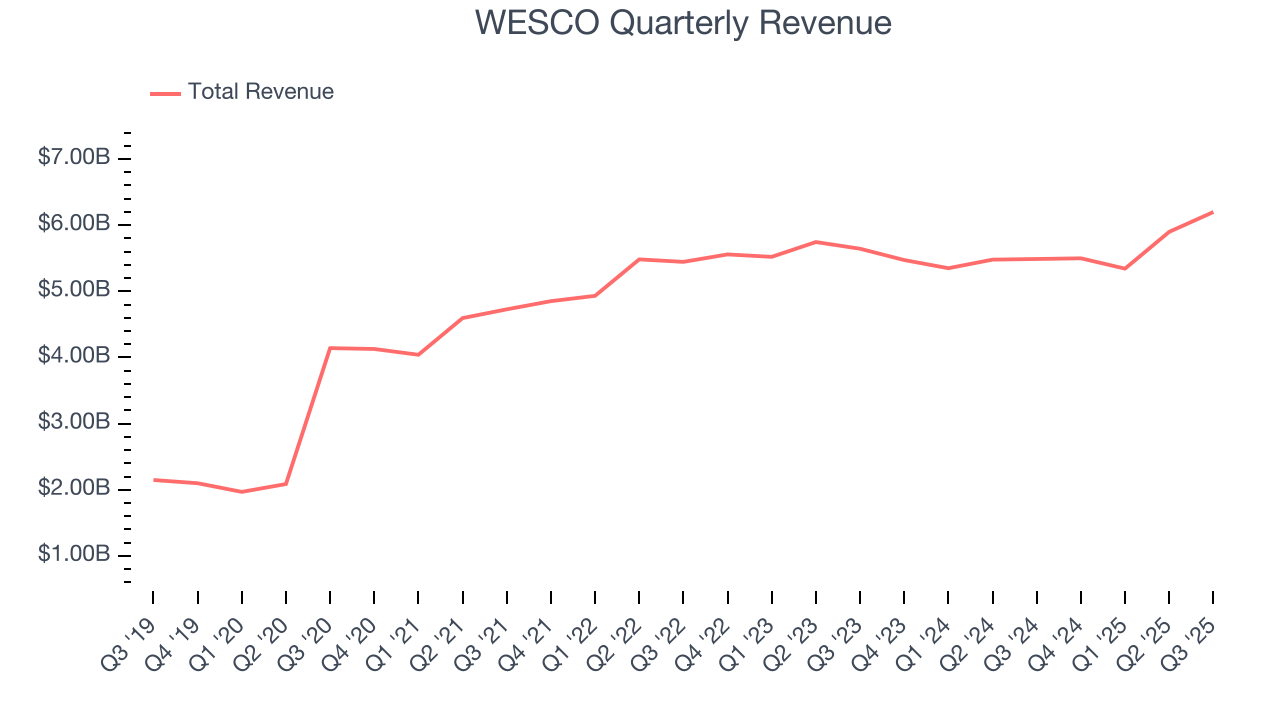
Long-term growth is the most important, but within industrials, a half-decade historical view may miss new industry trends or demand cycles. WESCO’s recent performance shows its demand has slowed significantly as its annualized revenue growth of 1% over the last two years was well below its five-year trend. 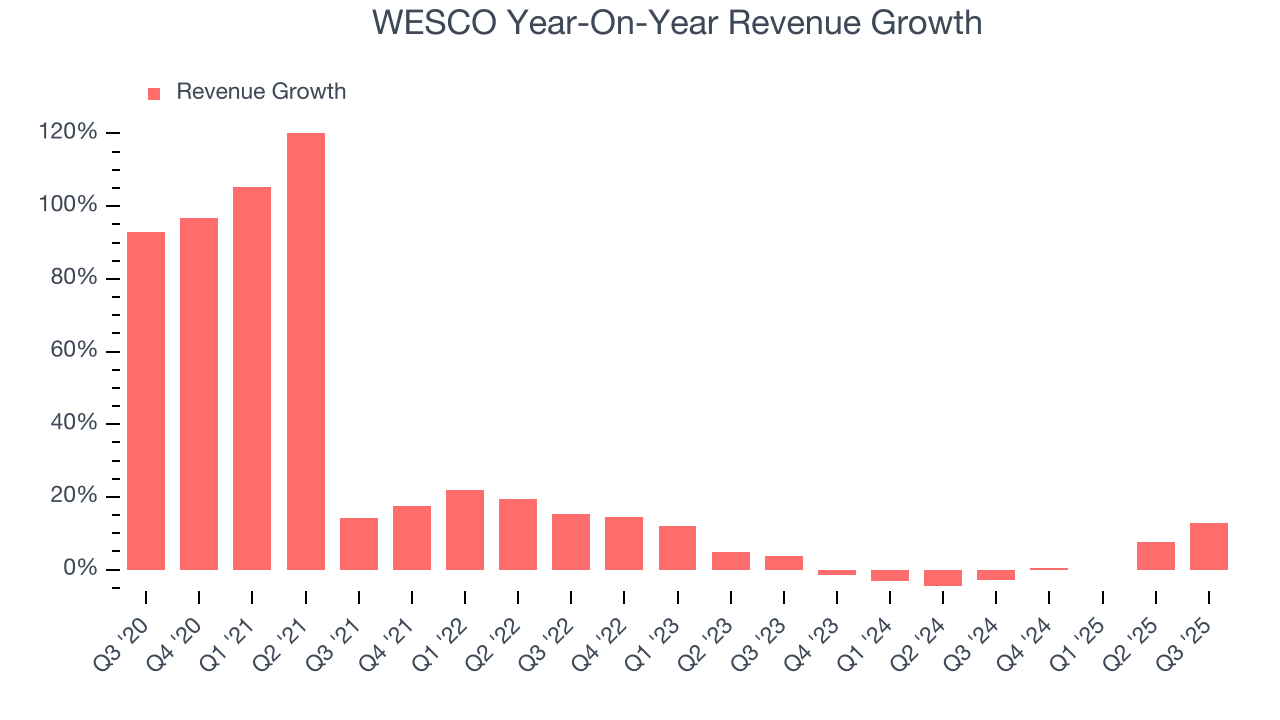
We can dig further into the company’s sales dynamics by analyzing its organic revenue, which strips out one-time events like acquisitions and currency fluctuations that don’t accurately reflect its fundamentals. Over the last two years, WESCO’s organic revenue averaged 2.5% year-on-year growth. Because this number aligns with its two-year revenue growth, we can see the company’s core operations (not acquisitions and divestitures) drove most of its results. 
This quarter, WESCO reported year-on-year revenue growth of 12.9%, and its $6.20 billion of revenue exceeded Wall Street’s estimates by 4.9%.
Looking ahead, sell-side analysts expect revenue to grow 4.2% over the next 12 months. While this projection suggests its newer products and services will spur better top-line performance, it is still below the sector average.
6. Gross Margin & Pricing Power
WESCO has bad unit economics for an industrials business, signaling it operates in a competitive market. As you can see below, it averaged a 21.3% gross margin over the last five years. Said differently, WESCO had to pay a chunky $78.67 to its suppliers for every $100 in revenue. 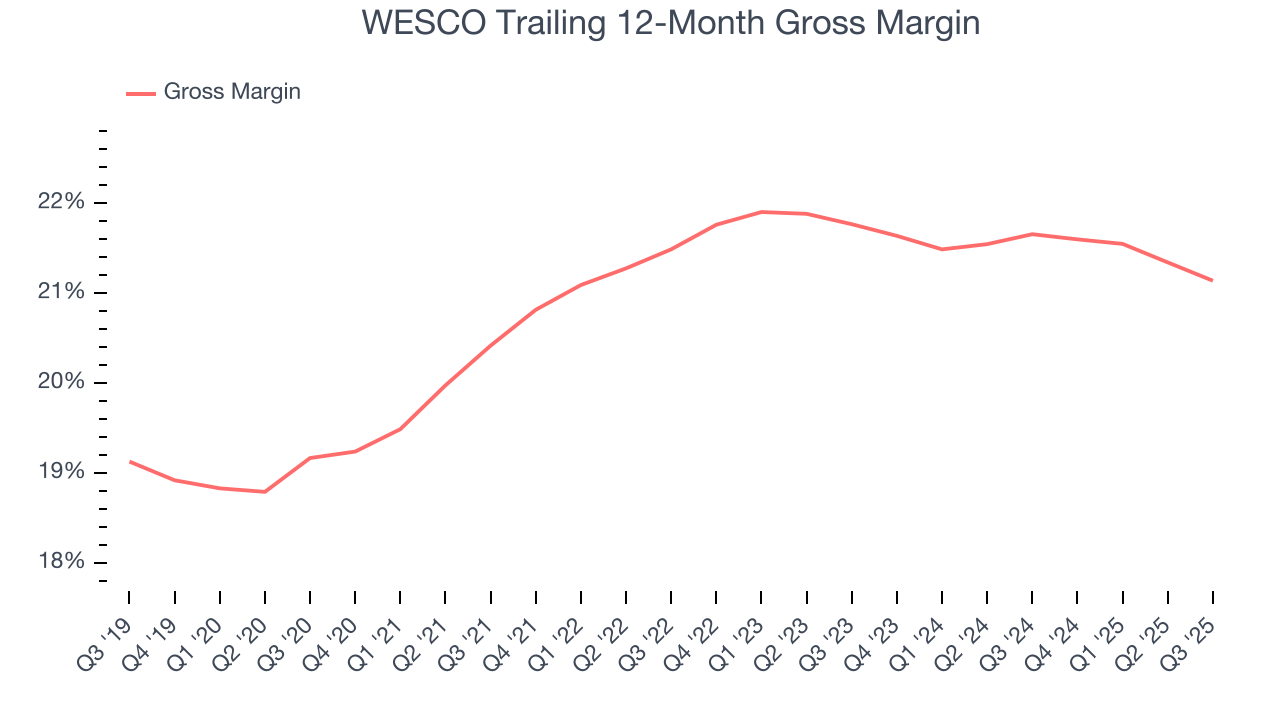
This quarter, WESCO’s gross profit margin was 21.3%, in line with the same quarter last year. Zooming out, the company’s full-year margin has remained steady over the past 12 months, suggesting its input costs (such as raw materials and manufacturing expenses) have been stable and it isn’t under pressure to lower prices.
7. Operating Margin
Operating margin is an important measure of profitability as it shows the portion of revenue left after accounting for all core expenses – everything from the cost of goods sold to advertising and wages. It’s also useful for comparing profitability across companies with different levels of debt and tax rates because it excludes interest and taxes.
WESCO was profitable over the last five years but held back by its large cost base. Its average operating margin of 5.6% was weak for an industrials business. This result isn’t too surprising given its low gross margin as a starting point.
On the plus side, WESCO’s operating margin rose by 1.4 percentage points over the last five years, as its sales growth gave it operating leverage.
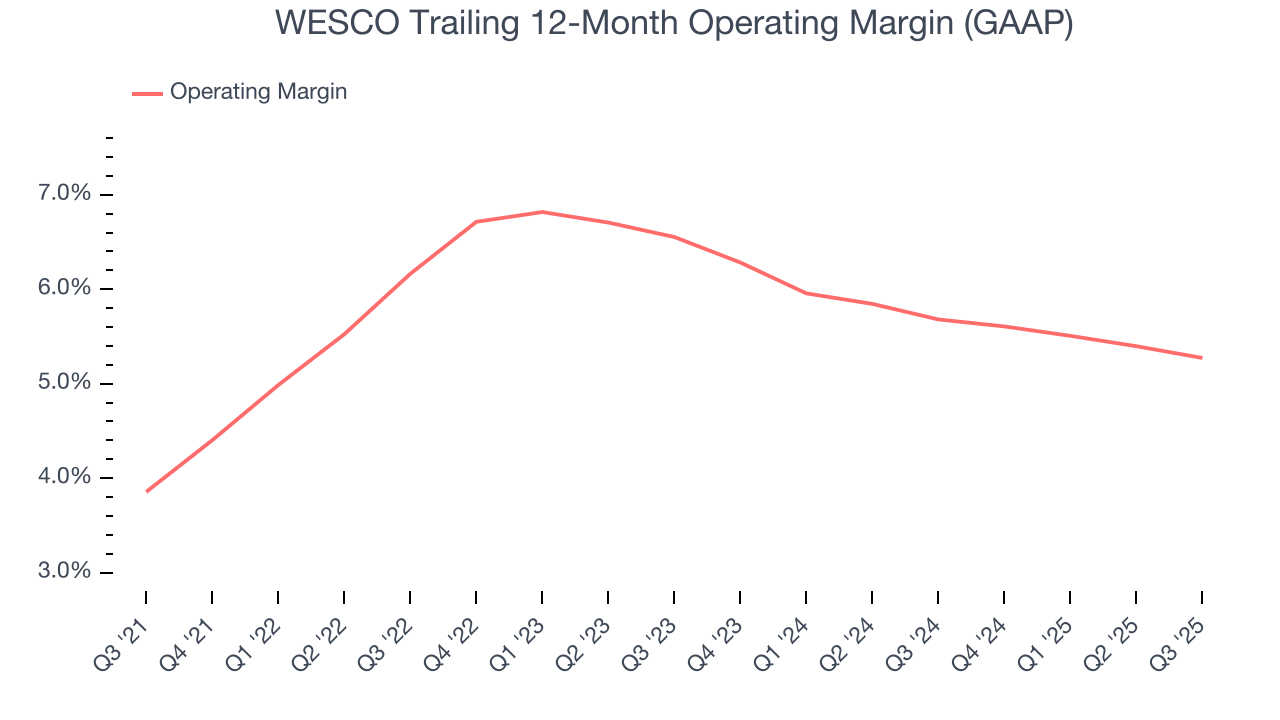
This quarter, WESCO generated an operating margin profit margin of 5.6%, in line with the same quarter last year. This indicates the company’s cost structure has recently been stable.
8. Earnings Per Share
Revenue trends explain a company’s historical growth, but the long-term change in earnings per share (EPS) points to the profitability of that growth – for example, a company could inflate its sales through excessive spending on advertising and promotions.
WESCO’s EPS grew at an astounding 19.4% compounded annual growth rate over the last five years, higher than its 17.4% annualized revenue growth. This tells us the company became more profitable on a per-share basis as it expanded.
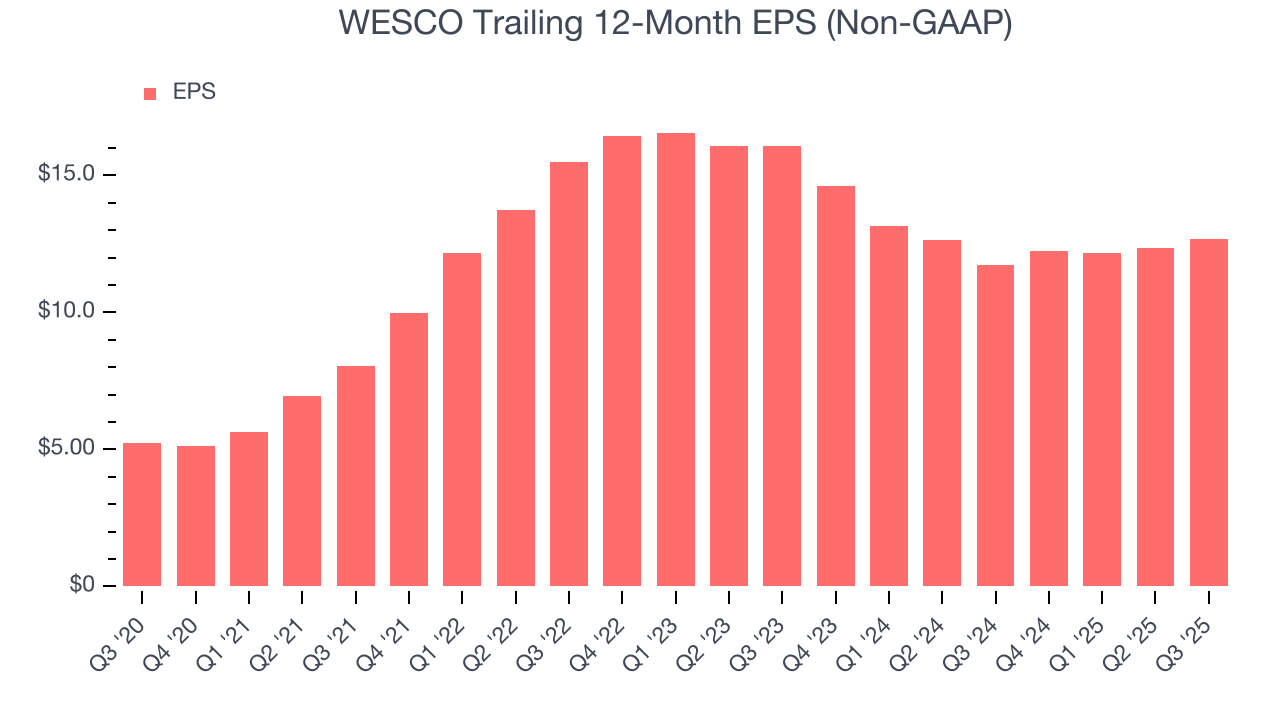
Diving into WESCO’s quality of earnings can give us a better understanding of its performance. As we mentioned earlier, WESCO’s operating margin was flat this quarter but expanded by 1.4 percentage points over the last five years. On top of that, its share count shrank by 2%. These are positive signs for shareholders because improving profitability and share buybacks turbocharge EPS growth relative to revenue growth. 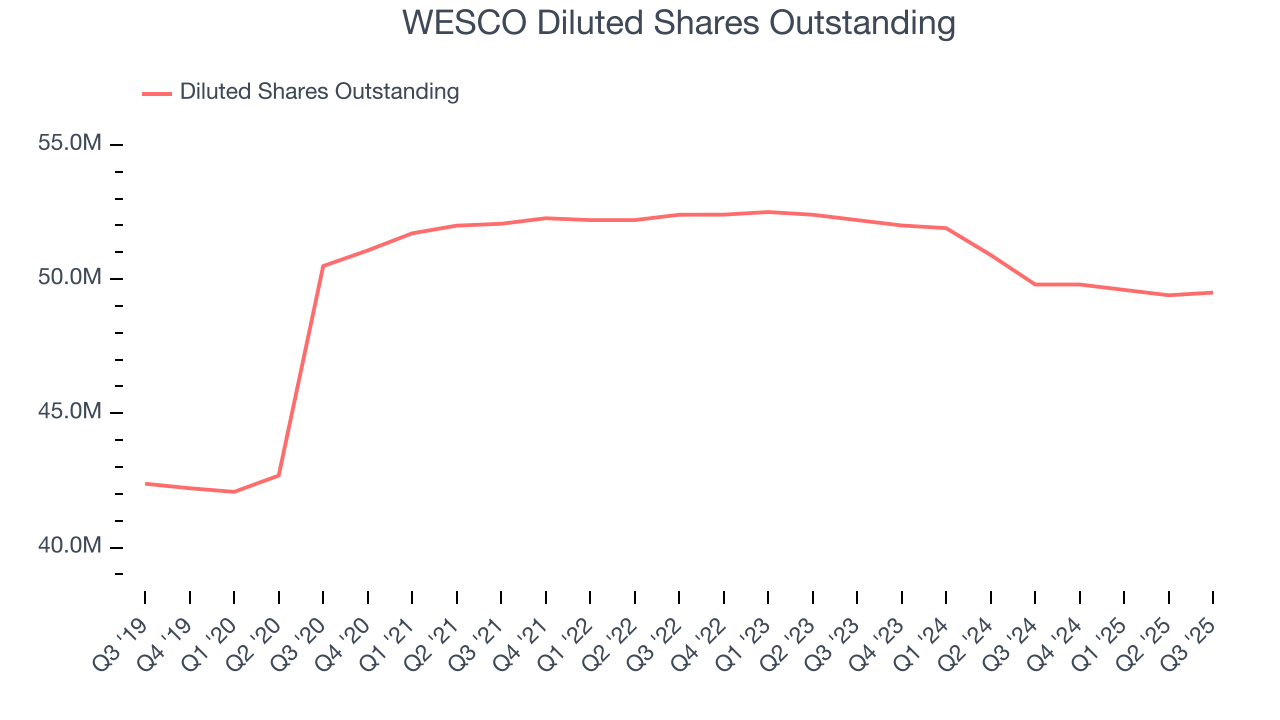
Like with revenue, we analyze EPS over a more recent period because it can provide insight into an emerging theme or development for the business.
For WESCO, its two-year annual EPS declines of 11.2% mark a reversal from its (seemingly) healthy five-year trend. We hope WESCO can return to earnings growth in the future.
In Q3, WESCO reported adjusted EPS of $3.92, up from $3.58 in the same quarter last year. This print beat analysts’ estimates by 2.3%. Over the next 12 months, Wall Street expects WESCO’s full-year EPS of $12.68 to grow 24.9%.
9. Cash Is King
Free cash flow isn't a prominently featured metric in company financials and earnings releases, but we think it's telling because it accounts for all operating and capital expenses, making it tough to manipulate. Cash is king.
WESCO has shown poor cash profitability over the last five years, giving the company limited opportunities to return capital to shareholders. Its free cash flow margin averaged 1.6%, lousy for an industrials business.
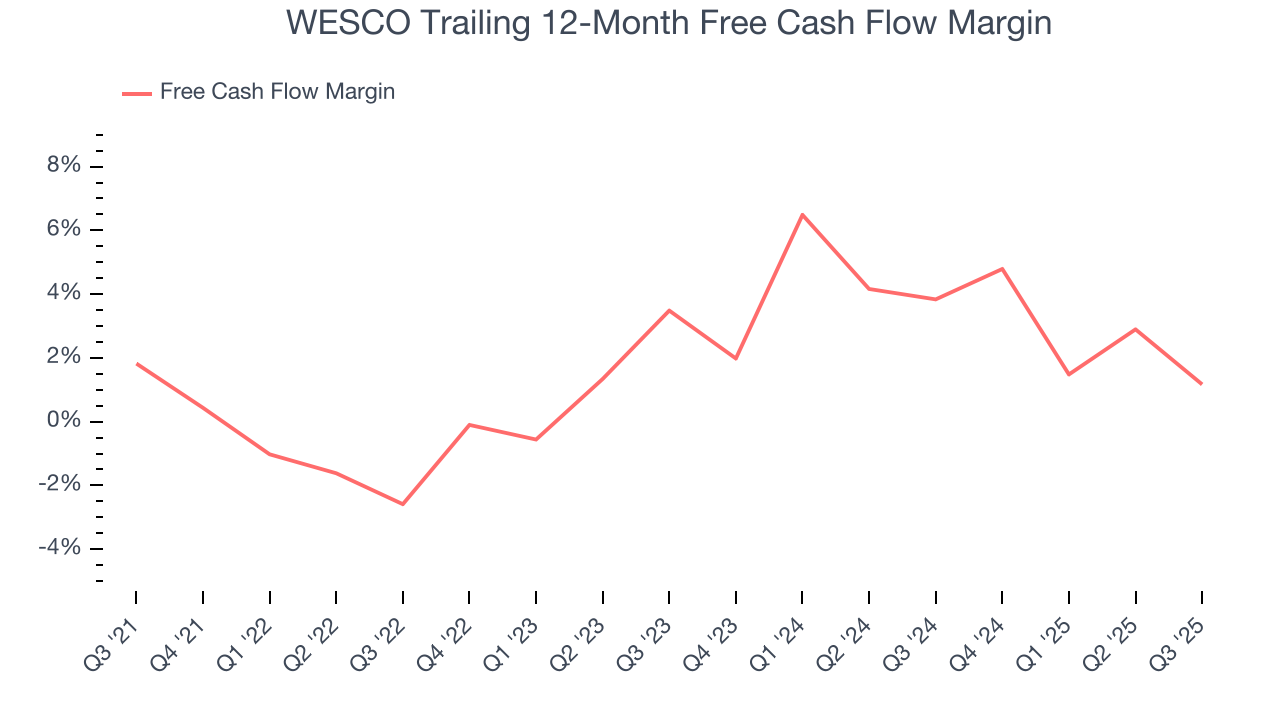
WESCO burned through $95.9 million of cash in Q3, equivalent to a negative 1.5% margin. The company’s cash flow turned negative after being positive in the same quarter last year, prompting us to pay closer attention. Short-term fluctuations typically aren’t a big deal because investment needs can be seasonal, but we’ll be watching to see if the trend extrapolates into future quarters.
10. Return on Invested Capital (ROIC)
EPS and free cash flow tell us whether a company was profitable while growing its revenue. But was it capital-efficient? Enter ROIC, a metric showing how much operating profit a company generates relative to the money it has raised (debt and equity).
WESCO’s management team makes decent investment decisions and generates value for shareholders. Its five-year average ROIC was 10.4%, slightly better than typical industrials business.
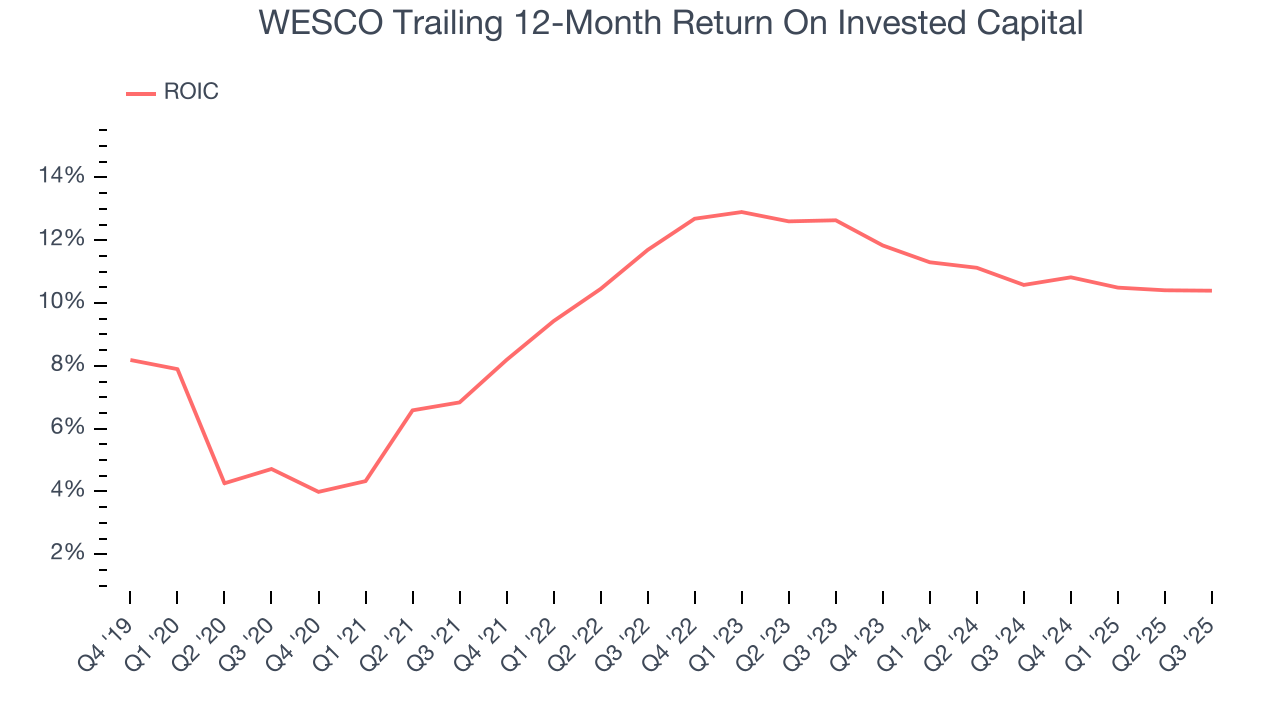
We like to invest in businesses with high returns, but the trend in a company’s ROIC is what often surprises the market and moves the stock price. Fortunately, WESCO’s ROIC averaged 1.2 percentage point increases over the last few years. This is a good sign, and we hope the company can keep improving.
11. Balance Sheet Assessment
WESCO reported $571.9 million of cash and $5.75 billion of debt on its balance sheet in the most recent quarter. As investors in high-quality companies, we primarily focus on two things: 1) that a company’s debt level isn’t too high and 2) that its interest payments are not excessively burdening the business.
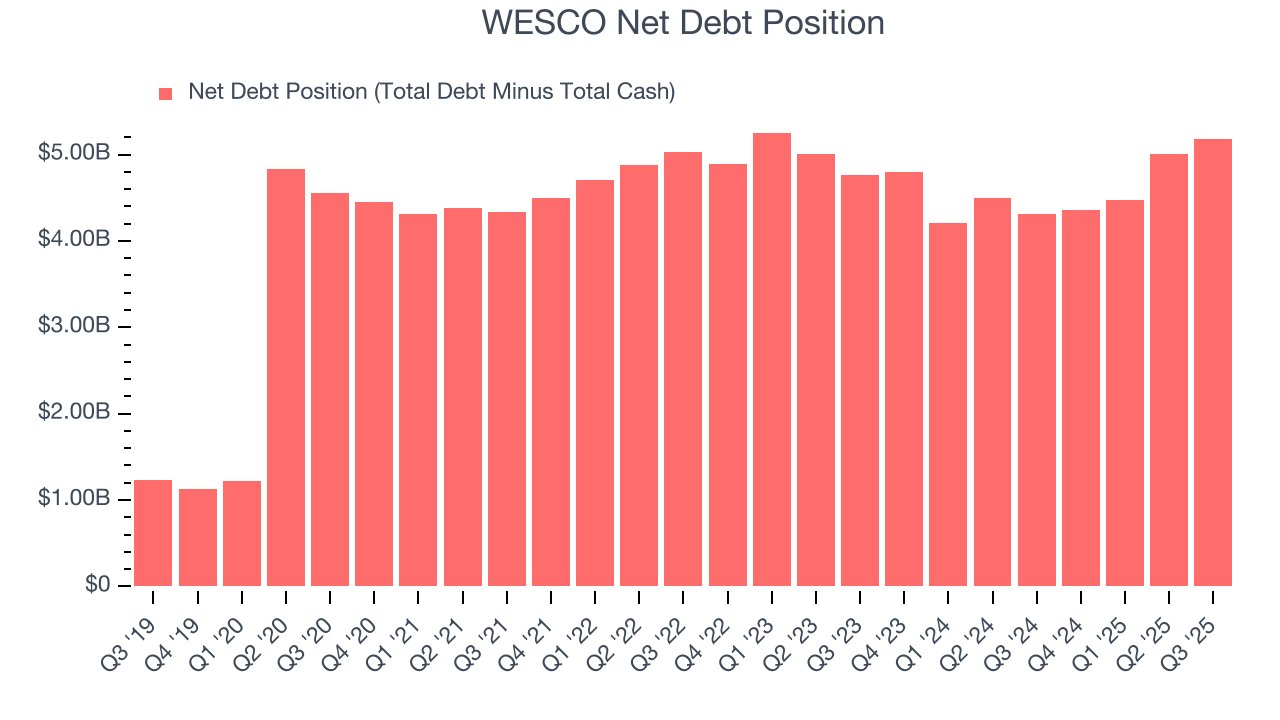
With $1.50 billion of EBITDA over the last 12 months, we view WESCO’s 3.5× net-debt-to-EBITDA ratio as safe. We also see its $165.3 million of annual interest expenses as appropriate. The company’s profits give it plenty of breathing room, allowing it to continue investing in growth initiatives.
12. Key Takeaways from WESCO’s Q3 Results
We were impressed by how significantly WESCO blew past analysts’ organic revenue expectations this quarter. We were also excited its revenue and EPS outperformed Wall Street’s estimates by a wide margin. Zooming out, we think this was a good print with some key areas of upside. The stock traded up 2.1% to $233 immediately following the results.
13. Is Now The Time To Buy WESCO?
Updated: December 24, 2025 at 10:06 PM EST
Before making an investment decision, investors should account for WESCO’s business fundamentals and valuation in addition to what happened in the latest quarter.
WESCO isn’t a terrible business, but it isn’t one of our picks. Although its revenue growth was exceptional over the last five years, it’s expected to deteriorate over the next 12 months and its low free cash flow margins give it little breathing room. And while the company’s astounding EPS growth over the last five years shows its profits are trickling down to shareholders, the downside is its organic revenue growth has disappointed.
WESCO’s P/E ratio based on the next 12 months is 16.1x. While this valuation is fair, the upside isn’t great compared to the potential downside. We're pretty confident there are superior stocks to buy right now.
Wall Street analysts have a consensus one-year price target of $287.75 on the company (compared to the current share price of $254.24).







